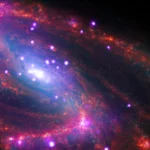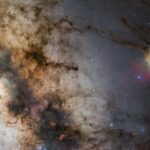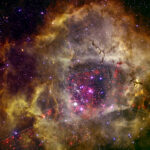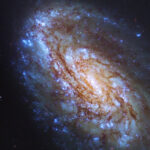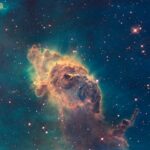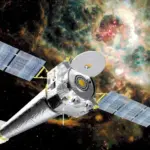This composite image shows one of the clusters, NGC 2024, which is found in the centre of the so-called Flame Nebula about 1,400 light years from Earth. In this image, X-rays from Chandra are seen as purple, while infrared data from NASA’s Spitzer Space Telescope are coloured red, green, and blue.
A study of NGC 2024 and the Orion Nebula Cluster, another region where many stars are forming, suggest that the stars on the outskirts of these clusters are older than those in the central regions. This is different from what the simplest idea of star formation predicts, where stars are born first in the centre of a collapsing cloud of gas and dust when the density is large enough.
The research team developed a two-step process to make this discovery. First, they used Chandra data on the brightness of the stars in X-rays to determine their masses. Next, they found out how bright these stars were in infrared light using data from Spitzer, the 2MASS telescope, and the United Kingdom Infrared Telescope. By combining this information with theoretical models, the ages of the stars throughout the two clusters could be estimated.
According to the new results, the stars at the centre of NGC 2024 were about 200,000 years old, while those on the outskirts were about 1.5 million years in age. In Orion, the age spread went from 1.2 million years in the middle of the cluster to nearly 2 million years for the stars toward the edges.











![Space Streams - Nebula [Ambient] image](https://space-streams.com/wp-content/uploads/2024/11/space-streams-nebula-150x150.png)
